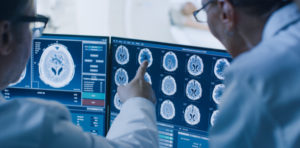The Healthcare sector is one of the primary domains that ensure the overall health of the mass. No nation can think of sustainable growth if the human capital of the country is not healthy. And this is the very task the medical care sector has been entrusted with. To ensure good health, timely detection of diseases and efficient handling of the sick people are a must. Science and technology have advanced at a never before pace over the last few decades, contributing substantially to the development and functioning of the health care sector. With the latest techniques and machines available for diagnosis and treatment of the several diseases that were earlier regarded incurable, today, the medical care sector stands stronger than ever, ensuring a healthier future for the entire human race.
One of the primary contributions of science in this regard has been the introduction of radiology in the field of diagnostics. If diseases cannot be traced properly, the same treatment cannot be done at any cost. Hence, the detection of disease accurately and timely is the most important part of the entire treatment process. Here comes the importance of radiology, which offers detailed images of the interior of the human body, which, in turn, helps in the detection of the abnormalities and helps the physicians to pursue the right path of treatment. Hence, radiology has been a pillar for the healthcare industry for a long and is evolving every day to serve the domain better.

An Overview
Teleradiology is a far more fresh term that has revolutionized the world of medical treatment. Communication is the one thing that has turned the entire world into a global village. With the internet reaching every corner of the globe, communicating with someone living in a faraway place is no longer a challenge. Teleradiology is a branch of radiology that makes the same possible for treatment and medical consultancies. Through teleradiology, X-ray, scan, or MRI images of the patients are sent to any other place using the internet for discussions and consultancies.
This has widened the scope of treatment greatly. If any critical disease requires expert opinions, the radiology results can be sent to any other country in the world for the experts worldwide to take a look at the same and offer their recommendations. This makes the entire process foolproof and open, allowing more chances of recovery and proper treatment for the patient. No wonder teleradiology is emerging as the future of the radiology domain. Also, with more advanced mechanisms getting added to it, teleradiology is going to be the next best thing for the medical sector.
The New Scenario
With the Corona Virus pandemic ruling every corner of the world, remote working has become the new standard for every industry. The medical care sector is also no exception and focusing on making things remotely available as much as possible. So far as interpreting and reading the image reports are concerned, teleradiology offers a smooth and effective way to do so, staying put remotely. The doctors, experts, and physicians no longer have to travel to the clinic to take a look at the x-ray plates to determine the problems.
The images get communicated to them through teleradiology techniques, and the treatment process gets started without the doctors having to move an inch to read and detect the disease. This technique also makes sure that the treatment process does not get delayed on accounts of the physical absence of the doctors. Hence, there is no doubt that teleradiology makes the entire process of treatment faster, smoother, and accurate.
The Trend
According to the latest reports, most of the imaging experts have already welcomed and opted for remote working facilities, thanks to teleradiology. These experts are also unwilling to move back to their traditional ways even when the pandemic comes to an end. This shows that teleradiology is becoming quite a popular option among healthcare experts as well. Hence, the industry is gearing up to make a place for it and investing substantially to make necessary arrangements.
However, no technology comes without its odds. For teleradiology as well, experts have cited that the peripheral duties of the radiologists like making protocol exams, communicating with technologists, and working with on-site review might be at stake with teleradiology replacing traditional radiology techniques rapidly. Hence, a midway to restore both necessities must be thought of to take advantage of the new techniques while maintaining the overall performance as well. Therefore, clinics and radiology centers should upgrade gradually, keeping all the evens and odds in mind, and must not jump to conclusions surrendering to the bandwagon of the market.
Be it the security of your radiology machines or the latest devices required to perform accurate diagnosis, at sepStream®, you will always find the best solutions at a reasonable price. For pocket-friendly PACS and RIS systems, you can depend on Sepstream blindly. From affordability to timely delivery, you will find only the best here.